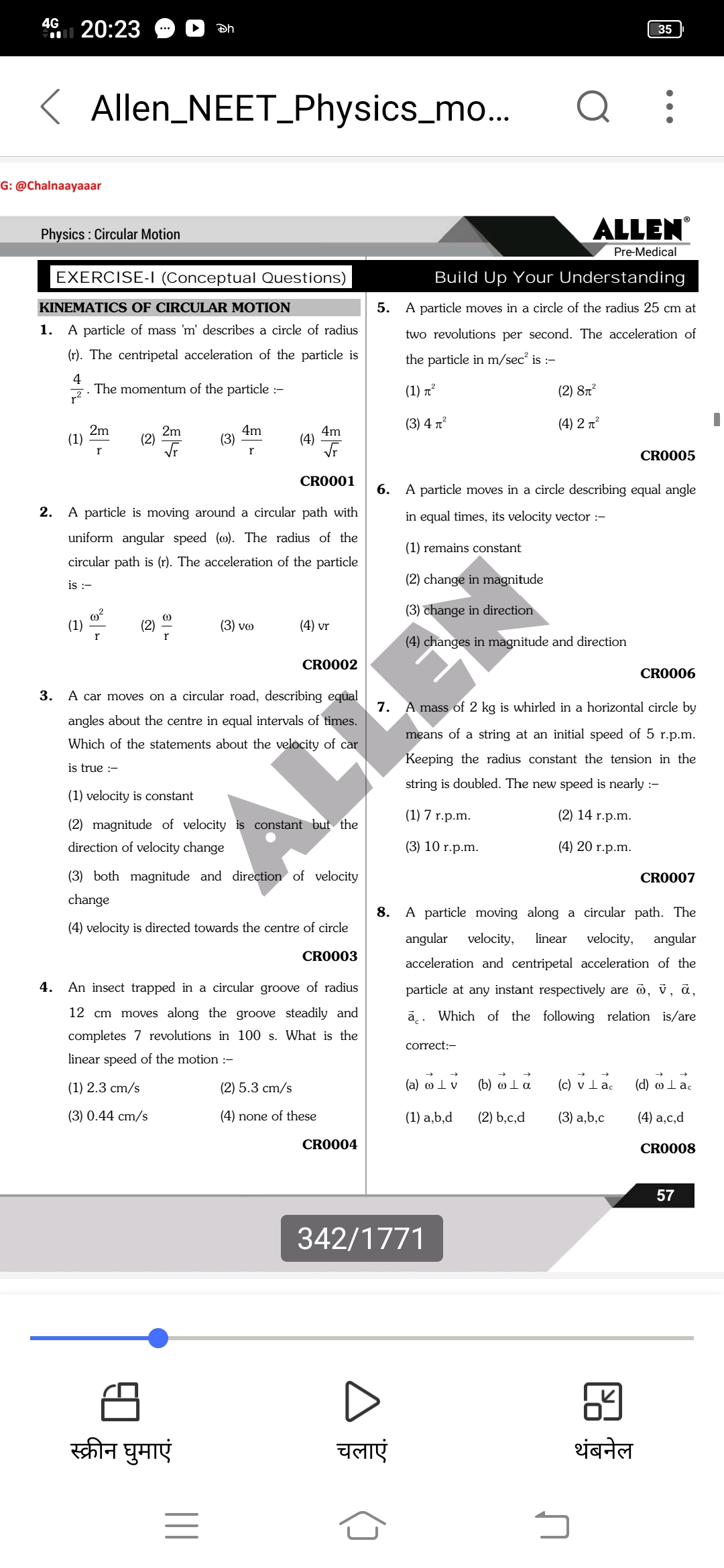A particle of mass 'm' describes a circle of radius (r). The centripetal acceleration of the particle is 4/r^2. The momentum of the particle is: (1) 2m/r (2) 2m/sqrt(r) (3) 4m/r (4... A particle of mass 'm' describes a circle of radius (r). The centripetal acceleration of the particle is 4/r^2. The momentum of the particle is: (1) 2m/r (2) 2m/sqrt(r) (3) 4m/r (4) 4m/sqrt(r)

Understand the Problem
The question appears to be multiple-choice physics problems related to circular motion, asking for calculations of various parameters such as centripetal acceleration and linear speed in circular motion context.
Answer
The acceleration of the particle is $4\pi^2 \, \text{m/s}^2$.
Answer for screen readers
The acceleration of the particle in m/s² is $4\pi^2$.
Steps to Solve
-
Identify the given data
The problem states that a particle moves in a circle of radius $r = 25 \text{ cm}$, completing two revolutions per second. -
Convert radius to meters
For calculations, it's useful to convert the radius into meters:
$$ r = 25 \text{ cm} = 0.25 \text{ m} $$ -
Calculate angular velocity
Angular velocity $\omega$ is given by the formula:
$$ \omega = 2 \pi f $$
where $f$ is the frequency (revolutions per second). Here, $f = 2 \text{ rps}$, hence:
$$ \omega = 2 \pi (2) = 4\pi \text{ radians/second} $$ -
Calculate centripetal acceleration
Centripetal acceleration ($a_c$) is given by the formula:
$$ a_c = \omega^2 r $$
Substituting the values:
$$ a_c = (4\pi)^2 (0.25) = 16\pi^2 \cdot 0.25 = 4\pi^2 , \text{m/s}^2 $$ -
Select the correct answer option
From the calculated centripetal acceleration, our result is $4\pi^2$, which matches option (3) from the given choices.
The acceleration of the particle in m/s² is $4\pi^2$.
More Information
Centripetal acceleration is the rate at which an object moving in a circular path changes direction. It always points towards the center of the circle, ensuring that the object maintains its circular path.
Tips
- Confusing linear speed with angular speed; make sure to differentiate between the two.
- Incorrectly converting the radius units; ensure all measurements are consistent (e.g., meters).
- Missing the factor of $2\pi$ when calculating angular velocity from revolutions per second.
AI-generated content may contain errors. Please verify critical information